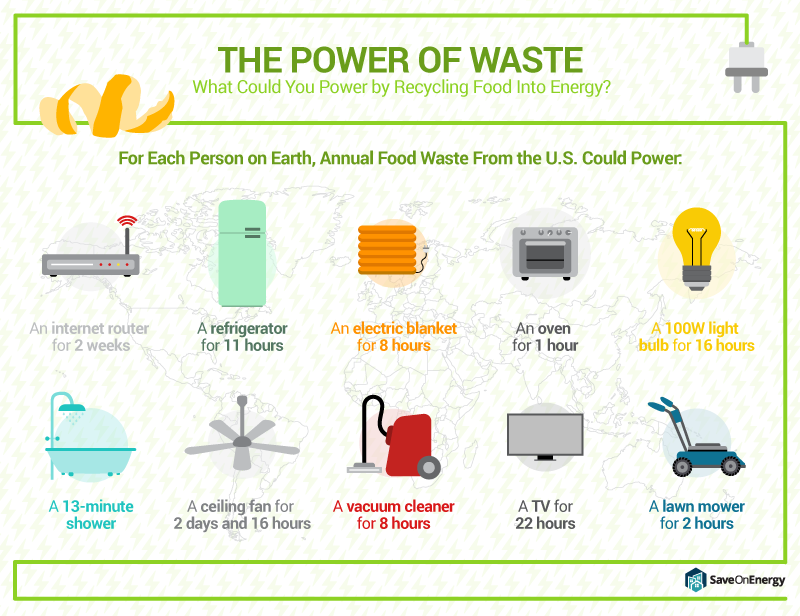
Food Waste Generated Electricity. Cornstalk manure food waste or food. There are 2 main objectives of this study being carried out. Just how much food do Americans waste. In addition composting and digestion of food waste are inefficient and slow.
Next the watery food waste left over after the liquefaction undergoes anaerobic digestion a process in which microbes break down the waste into biogas that is primarily composed of methane. These kinds of food waste could be. So green energy is also known as renewable energy and is energy that is generated from natural resources such as sunlight wind water and in our case food waste. One of the main benefits is that green energy is better for the environment than fossil fuels as it causes less pollution and as it is renewable it will never run out. When compared to first-generation crop-based biomass suchas corn or soybeans as an energyfeedstock food wastedoes not incurthe negative impacts associated with. Electricity generation by treating food waste is promised to play an important role in renewable energy management.
Nearly 40 million tons 80 billion pounds every year.
Population it represents a lot of energy that could be saved right there. One of the main benefits is that green energy is better for the environment than fossil fuels as it causes less pollution and as it is renewable it will never run out. So green energy is also known as renewable energy and is energy that is generated from natural resources such as sunlight wind water and in our case food waste. We also generate inevitable food waste such as peels of potato onion fruit egg and so on. How One Company is Turning Food Waste into Electricity. There are 2 main objectives of this study being carried out.